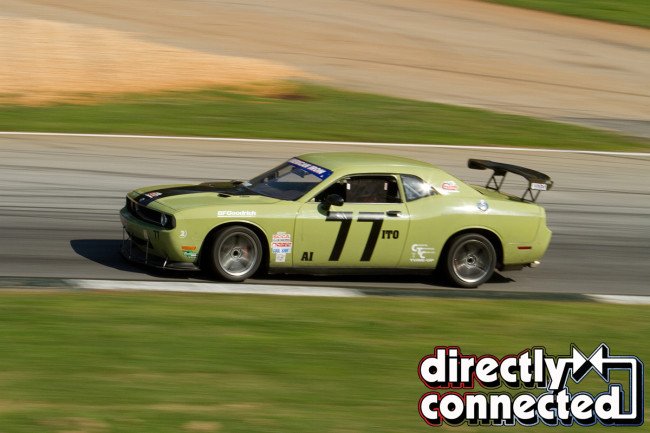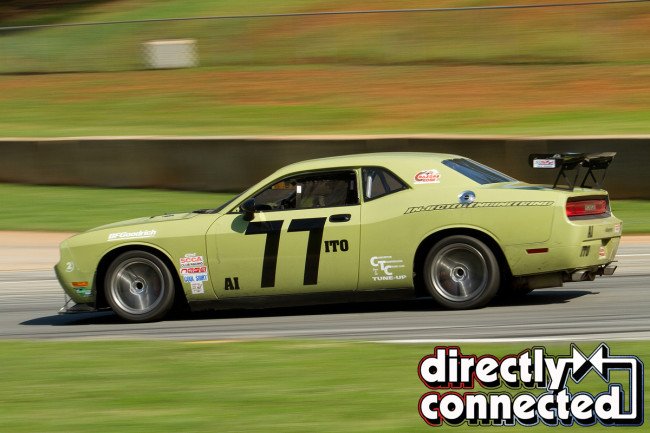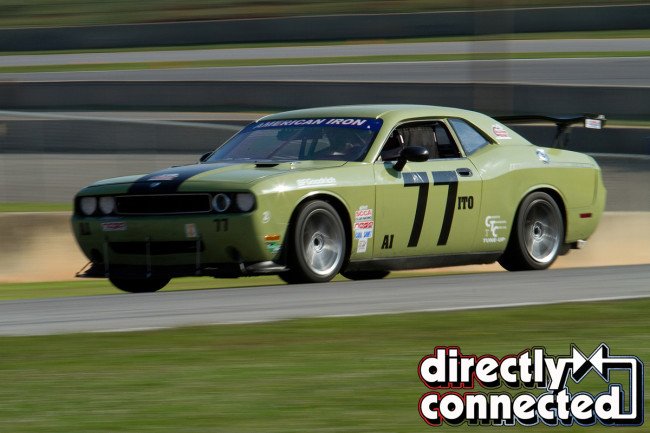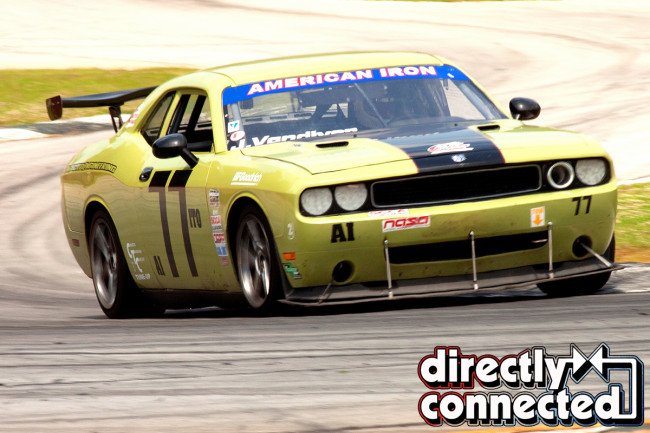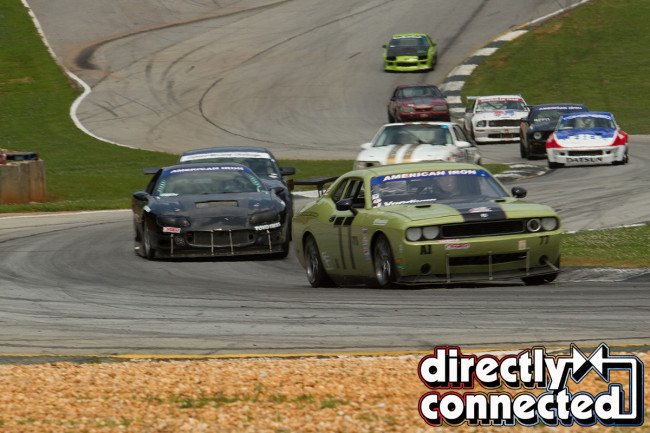At last year’s SEMA show, Dodge unveiled several high performance concepts, and among them was the 2015 Dodge Challenger T/A Concept. It was a clear nod to the homologation special Dodge Challenger T/A that Chrysler produced for a few months in 1970 along with its Plymouth counterpart, the AAR ‘Cuda. The limited production muscle cars were built in order to satisfy homologation rules in the recently-established Trans-American road racing series that Ford, GM, and AMC were already mixing it up in, where they were creating quite a bit of publicity (and sales) for the road-going versions of the race cars they were campaigning.
With Chevrolet exceeding expectations with the new Camaro Z/28 and Ford’s track-focused GT350 and GT350R Mustangs on the way, now seems like an ideal time for Mopar to fire back with an honest track terror of their own – not just to compete in this space, but also to give would-be amateur road racers a solid Mopar canvas to work with.
That got us wondering – has anyone actually tried building and campaigning a modern Challenger in road race events? The Sports Car Club of America and the National Auto Sport Association both have race classes for American muscle cars (American Sedan and American Iron, respectively) but to look at the typical fields in these events, you’d think they might as well be called “Mustangs Versus Camaros.” But Joel Vandiver of Cornelia, Georgia had a different idea.
“I got the racing bug after doing a SRT Track Experience at Atlanta Motor Speedway after buying a new SRT-8 Charger,” he told us. That day at the track would snowball into a racing fixation for Joel, one which would later result with him standing on the top spot of the podium at last year’s South-Eastern Championship in NASA’s American Iron Extreme class with a 2008 Dodge Challenger that he built, with virtually no outside support, “out of an old service station on a blue collar salary”.
We sat down with the enthusiast-turned-racer to get the skinny on how he ended up on the grid with a Challenger, what it took to make the car competitive, and to get his thoughts on what he’d want to see in a production Challenger T/A.
Directly Connected: Can you tell us a bit about your background with Mopars and racing?
JV: After the Track Experience event, I decided to build myself a track car out of a 2007 Charger police car and a totaled Charger SRT parts car. I joined NASA and went through the HPDE program. Later I moved on up to NASA’s Time Trial events and I did well. From there, I knew I wanted to do wheel to wheel racing.
DCM: What made you choose to run a modern Challenger in American Iron?
JV: I built the Challenger with the hopes of getting some sponsorship by winning races in a car that was different. If I had built a Corvette I would have been just another fast guy in a Corvette. I already had the engine I had built, along with a lot of the other performance parts off the Charger that I’d been using in TT events, and I knew the platform, so I built the Challenger.
DCM: Tell us a bit about the race formats the car was/is being used in (i.e. sprint, endurance, etc)?
JV: I did a few time trial events initially, mainly to sort out the setup of the car. I campaigned the car from 2011 through 2014 seasons in NASA and SCCA sprint racing, which are typically 30-45 minute races.
DCM: In regards to converting the car for race duty, can you describe the setup process? What did you start with, what did you change, and where did you end up?
JV: I started from a bare Challenger body that I found on Racingjunk.com, then I bought a 2008 Challenger SRT donor car that had been in a roll-over crash to get most of the parts I needed. The rest I got from eBay and Craigslist.
I knew that I needed to change over to a six-speed (manual) gearbox because the five-speed automatic was kind of holding me back. I also installed a stroker kit on the motor, which is now a 7.0-liter Hemi that makes about 465 horsepower at the wheels. The car is about 3800 pounds with driver and fuel.
DCM: What advantages and disadvantages does the Challenger have for road racing builds?
JV: Two clear advantages come to mind, and first is the great engine. The second is that the car has one of the best designed braking systems out there. I routinely out braked cars weighing three to five hundred pounds less all with stock SRT calipers and rotors. All I did was add racing pads, braided lines and cooler hoses.
My biggest limitation was the weight of the car. Also there just really wasn’t anyone I could ask for advice [about building and setting up the car] because I was forging new territory – I was one of the first people to try to develop this chassis for road racing, so if I wanted answers, I had to find them myself.
DCM: How’d the car fare for starting grid position/competitiveness?
JV: The first time we went racing I finished in third. Then we won the Sunday race the following day. The car has competed in 24 races and I was on the podium in 18 of those events, with ten wins total. The car always qualified well, but lap times would start to drop off during races because of the car’s mass and a lack of funds for good tires. There has never been a new set of slicks on the car – I have always raced on tires I bought second hand.
DCM: How big are NASA AIX car counts (field size) in your region?
JV: AIX fields have varied from three to eight cars in class depending on the event, with about 30 to 40 cars on track total, since multiple race classes run during the same session.
DCM: Dodge showed off a Challenger T/A concept at the 2014 SEMA show – if you could create a T/A package for the 2015 model, considering your experience racing this chassis competitively, what do you think the package should include?
JV: The car would need to shed some pounds. Ideally, it should weigh 3700lbs or less and have about 500 horsepower at the wheels. To get the weight down to that level they would probably need to start out with a Drag Pack Challenger and give it a coil-over suspension package with adjustable sway bars. The car would also need a functional aero package to keep things planted.
DCM: Do you have any future Mopar projects in the works?
JV: Unfortunately not at the moment. Even though I’m considered the most successful modern Challenger amateur road racer to date, I haven’t had much luck getting any support from Mopar in terms of campaigning the car. It’s a bit of a shame because I feel that I could be competitive in the TA3 class in the TransAm series with sponsorship assistance.
Hey SRT, don’t let the next Sam Posey fall into the wrong hands – sign this guy up.








